When embarking on a quest for a new look or updating your current look, tapers and fades often emerge as popular choices at barbershops. It’s not uncommon for both barbers and clients to use these names interchangeably, despite their distinct characteristics. At first glance, these cuts may appear similar — both involve cutting the hair short along the sides and back of the head. However, a closer look reveals the unique essence of each style.
Fades vs Tapers: Unveiling the Key Distinctions
The key to a satisfying haircut lies in understanding the differences between these styles. Effective communication with your barber is crucial in getting the look you want. A taper offers a more gradual transition in hair length, maintaining some length on the top while blending it into shorter lengths on the sides and back. On the other hand, a fade typically involves a more dramatic change, with the hair cutting extremely short near the bottom, often fading to the skin. By sharing pictures and having a conversation using the right terms and vocabulary, you can guide your barber to create the style that will make you happy. We’ll delve into these styles, providing examples and explanations to help distinguish a taper from a fade, aiding you in your next haircut request.
1. What is Taper: Reduce in thickness toward one end
The term taper in hairstyling refers to a technique where the thickness of the hair is reduced towards one end. This cut typically involves gradually shortening the hair as it moves down the head, creating a subtle, clean transition from long to short. Unlike a fade, where the hair is cut very short towards the bottom and often fades into the skin, a taper maintains a more consistent length throughout.
In a tapered hairstyle, the change in hair length is less dramatic than in a fade, offering a fresh and clean look while still providing versatility in styling. Tapers are commonly incorporated into various haircuts, lending a refined finish to both classic and contemporary styles. The key to a successful taper is the seamless blend of different hair lengths, which gives a neat and tidy appearance.
1.1 Low Taper
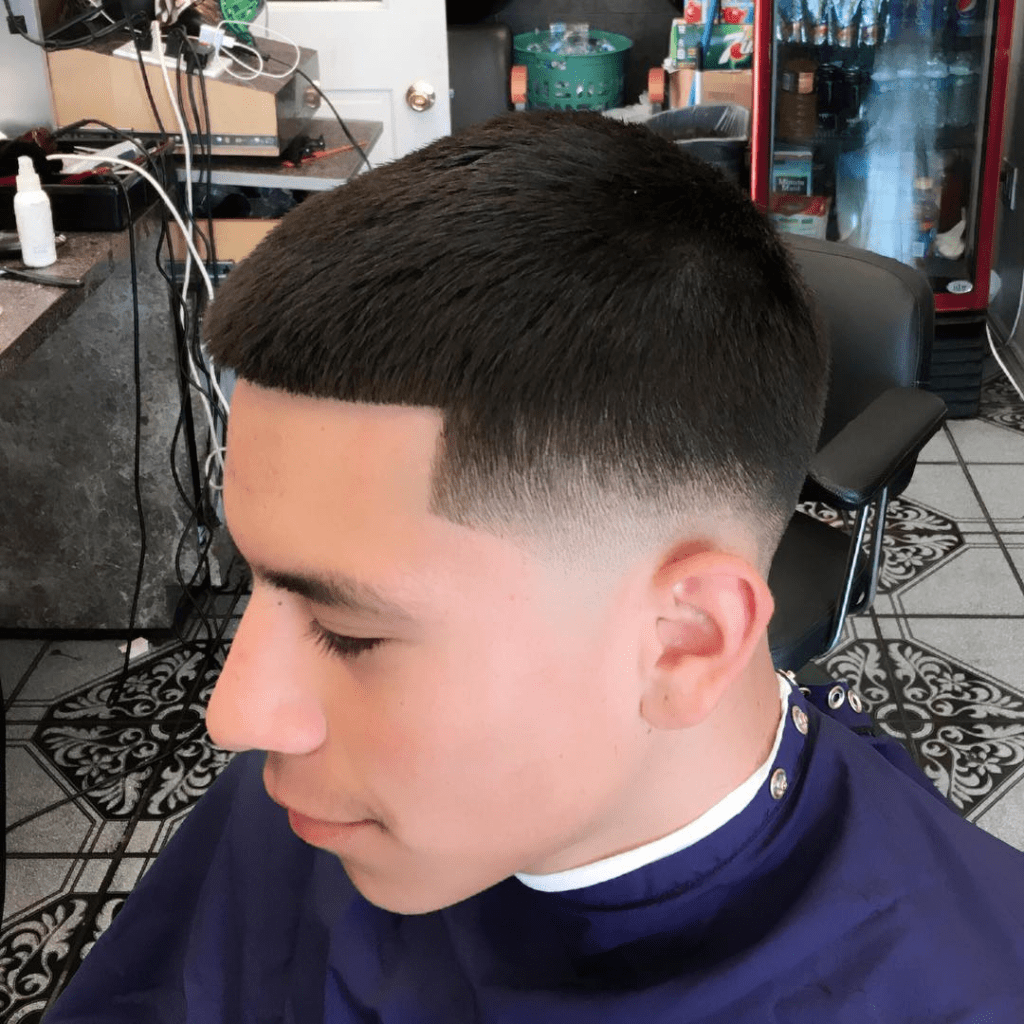

A Low Taper is a refined cut where the hair gradually becomes shorter just above the ears, blending seamlessly with the hairline. This style maintains a clean look without drastically reducing the length of the hair or exposing the scalp. Ideal for those seeking a simple yet posh aesthetic, it’s a versatile choice for everyday wear. The low taper strikes a perfect balance, offering a subtle, stylish edge while keeping the overall appearance neat and professional.
1.2 High Taper


The High Taper is a dynamic cut where the hair shortens a couple of inches above the ears, creating a striking contrast to the low taper. This style is often paired with comb overs or modern high tops, enhancing the overall visual appeal. The high taper provides a bolder statement, offering a sharper transition in hair length that blends sophistication with contemporary flair. It’s a popular choice for those looking to add an edgy yet polished touch to their hairstyle.
1.3 Tapered Neckline
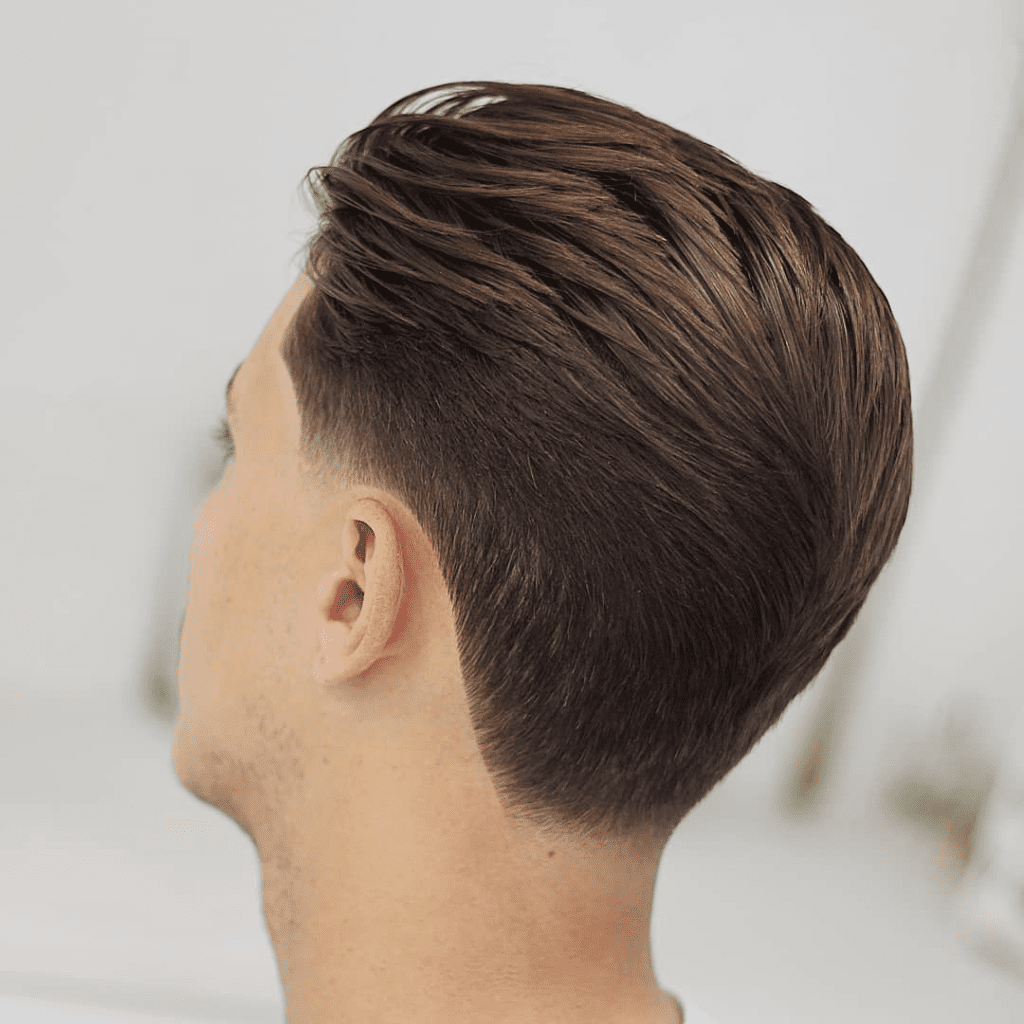

A Tapered Neckline is an elegant addition to both taper and fade haircuts, where the neckline is carefully cut to add a unique personality to your hair. This style can range from intricate designs to a classic shape, offering a tailored look that complements the overall haircut. The tapered neckline is designed to appear more natural as it grows out, unlike rounded or blocked necklines which may require regular maintenance to keep their distinct shape. Whether you opt for a bold disconnection or a subtle taper, this detail can significantly enhance the haircut’s character.
1.4 Skin Taper
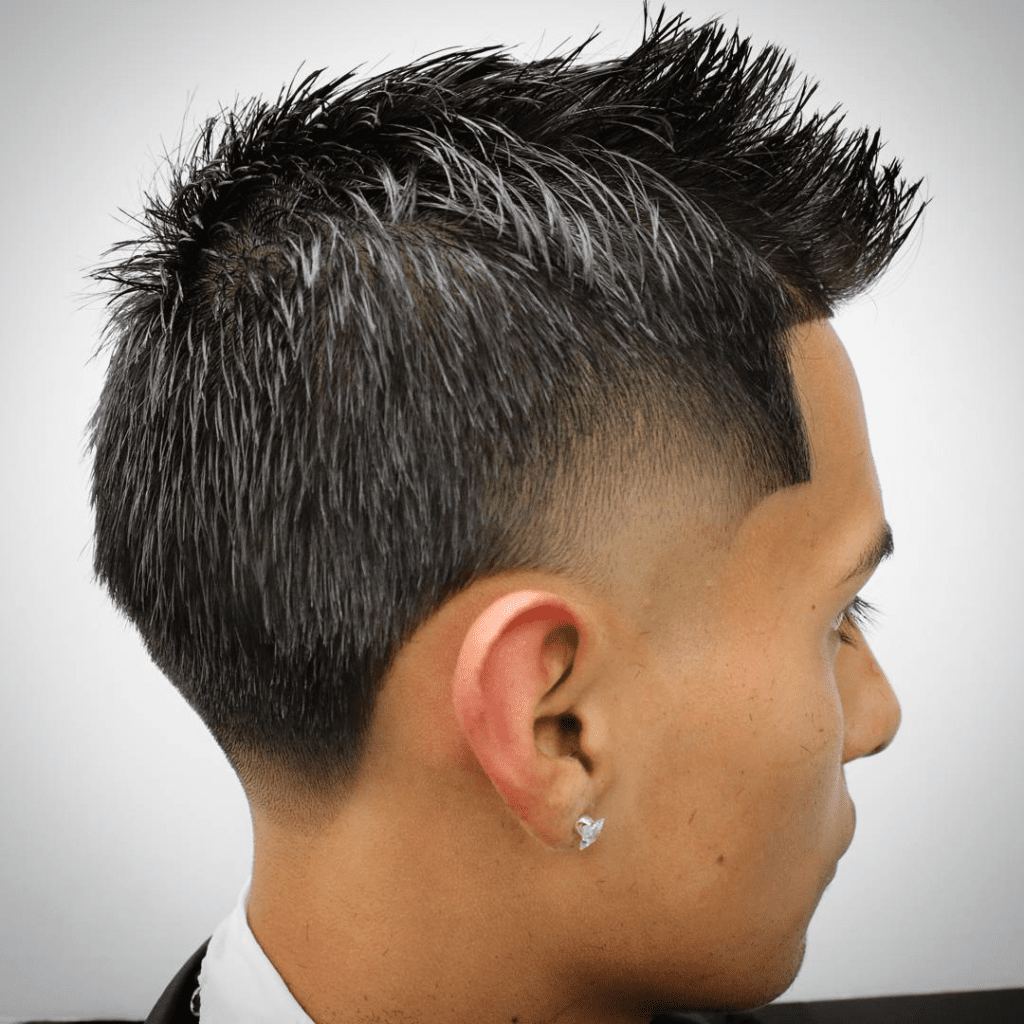

The Skin Taper is a distinctive style where the hair is shaved very close to the skin, making the scalp visible. This type of taper is a sleek blend of traditional tapers and more daring cuts, like the high taper. It’s particularly practical in warmer weather, keeping the hair off the face and neck for a cooler experience. The skin taper adds an easy way to spice up any haircut, offering a clean, edgy look that stands out. Whether integrated into complex styles or simpler cuts, it brings a bold and modern twist to the traditional taper.
2. What’s is Fade: To gradually disappear
In hairstyling, a Fade is aptly described as a technique where the hair seems to gradually disappear. Unlike a taper, where the transition in hair length is more subtle, a fade involves cutting the hair progressively shorter as it moves down the back and sides of the head. The hairline often has the shortest part, with the hair evenly transitioning to create a clean and classic look.
Fades can be incorporated into a myriad of styles, adding a contemporary flair to both classic and modern hairstyles. As the hair grows out, the fade maintains its distinct appearance, though it may require upkeep to preserve its sharp contrast. This cut offers ample room for creativity, with various types of fades — each providing a unique finish to the haircut. Whether integrated into tapered cuts or other hairstyles, a fade can dramatically transform your look, often without the need to explicitly ask for it by name, as many barbers already incorporate it into their designs.
2.1 Low Fade
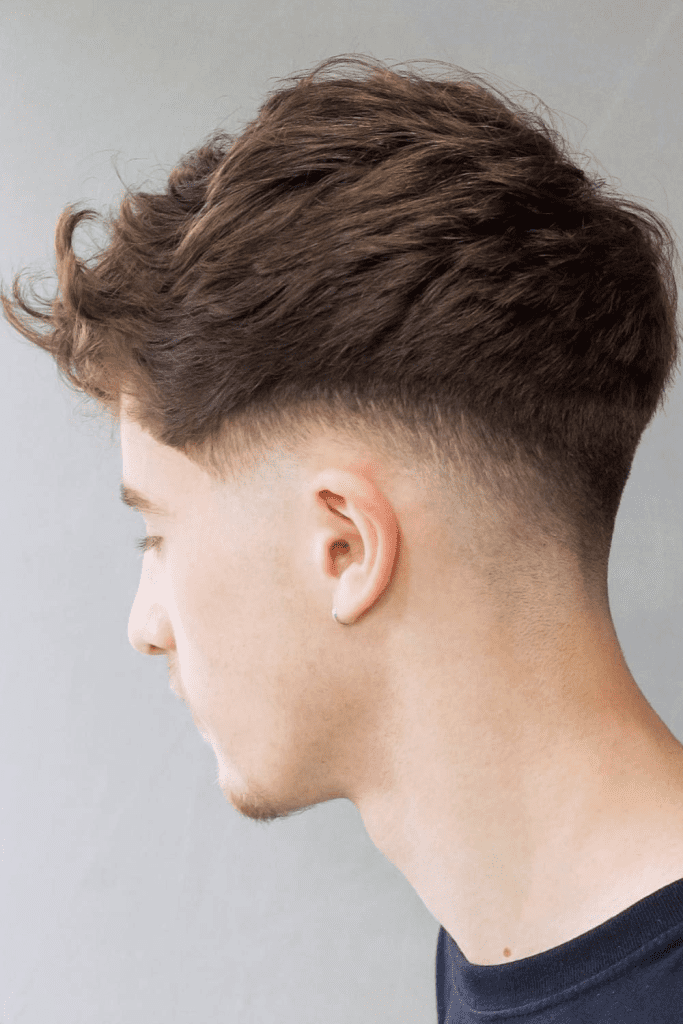

A Low Fade is a subtle yet impactful style that begins just above the hairline and is similar in some ways to a taper. The major difference, however, lies in how it abruptly changes the hair lengths, creating a more pronounced transition than a taper. This cut adds an extra flair to otherwise simple styles like a crew cut or a buzz cut, enhancing their overall appearance with a modern twist. The low fade is an excellent choice for those looking to add a touch of sophistication to their haircut without being too dramatic.
2.2 Drop Fade


The Drop Fade is an ideal choice for those wanting to steer away from the classic fade and opt for something more unique. Characterized by a fade that drops below the ears and follows the natural shape of the head, it creates a distinctive silhouette. This style requires some maintenance to keep the contrast sharp as the hair grows out. However, with some at-home care between appointments, it can be a manageable and striking option. The drop fade adds a dynamic edge to your look, making it a popular choice for those seeking a blend of traditional and modern styles.
2.3 Skin Fade
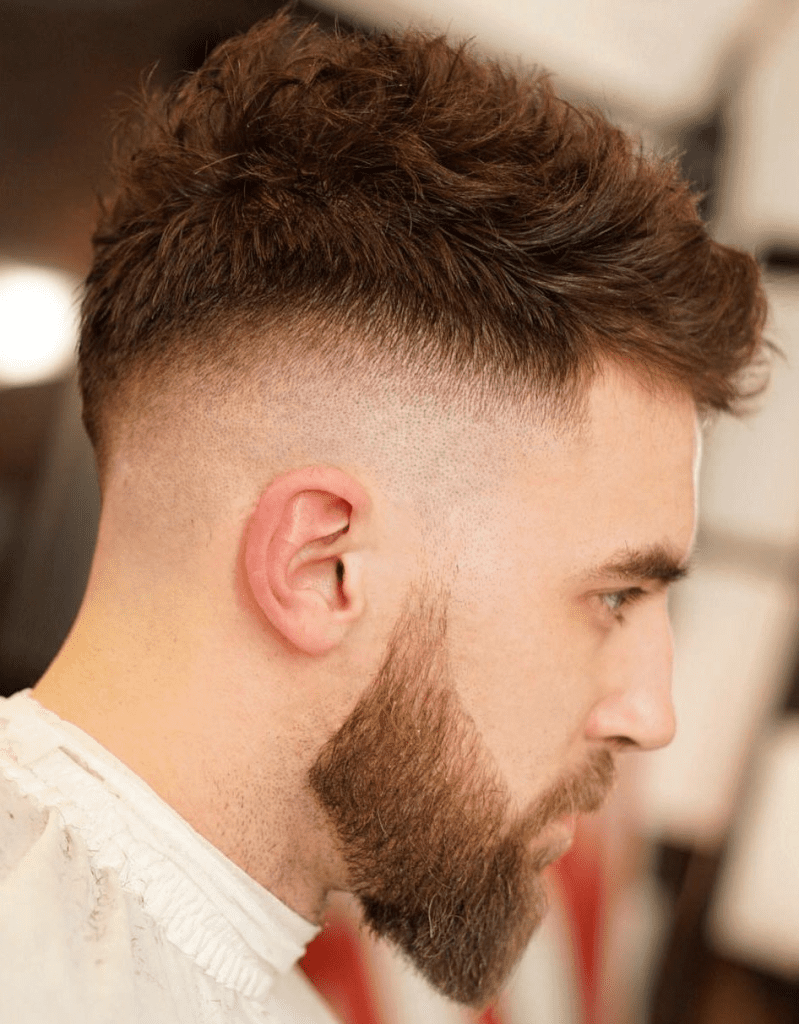

The Skin Fade, also known as a bald fade, is a more intense variation of the traditional fade. It involves shaving the hair close to the skin, stopping just before the natural hair line. This style allows for dramatic contrast, especially when paired with a longer top – perfect for styles like a quiff or a pompadour. It’s also great for those who prefer short cuts that require minimal styling on an everyday basis. The skin fade offers a clean, sharp look that stands out, making it a popular choice for those seeking a bold and distinctive hairstyle.
2.4 Undercut Fade
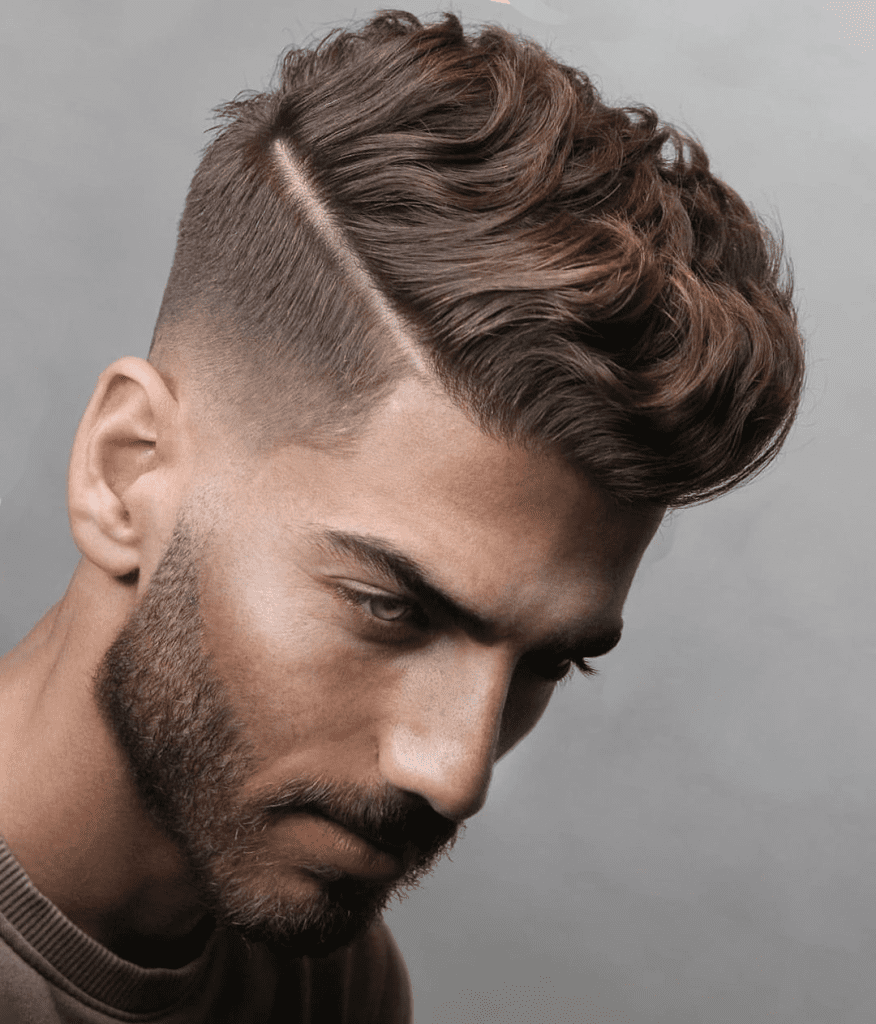

The Undercut Fade combines the sharpness of a fade with the distinctiveness of an undercut. This style features a blurry fade that is cut high above the ears, offering a modern twist to the traditional fade. It’s particularly striking with long hair, as it allows you to show off the length differences. The addition of a hard part or a disconnected style can add an extra edge to more classic looks, such as the ivy league cut. This combination of styles creates a dynamic and stylish look, perfect for those seeking to blend classic elegance with contemporary flair.
2.5 Faux Hawk Fade


The Faux Hawk Fade is a stylish variation that takes cues from both the Faux Hawk and traditional fades. Unlike mohawks, which are characterized by fully shaved sides, the Faux Hawk Fade keeps some hair on the sides of the head. This creates a stand out style with subtle height and contrast, differentiating it from the more extreme mohawk. The fade aspect adds a modern touch, blending the hair length on the sides into the tapered cut. This style is an excellent route for those seeking a stylish yet not overly bold look, offering a balance between edginess and wearability.
2.6 High Fade
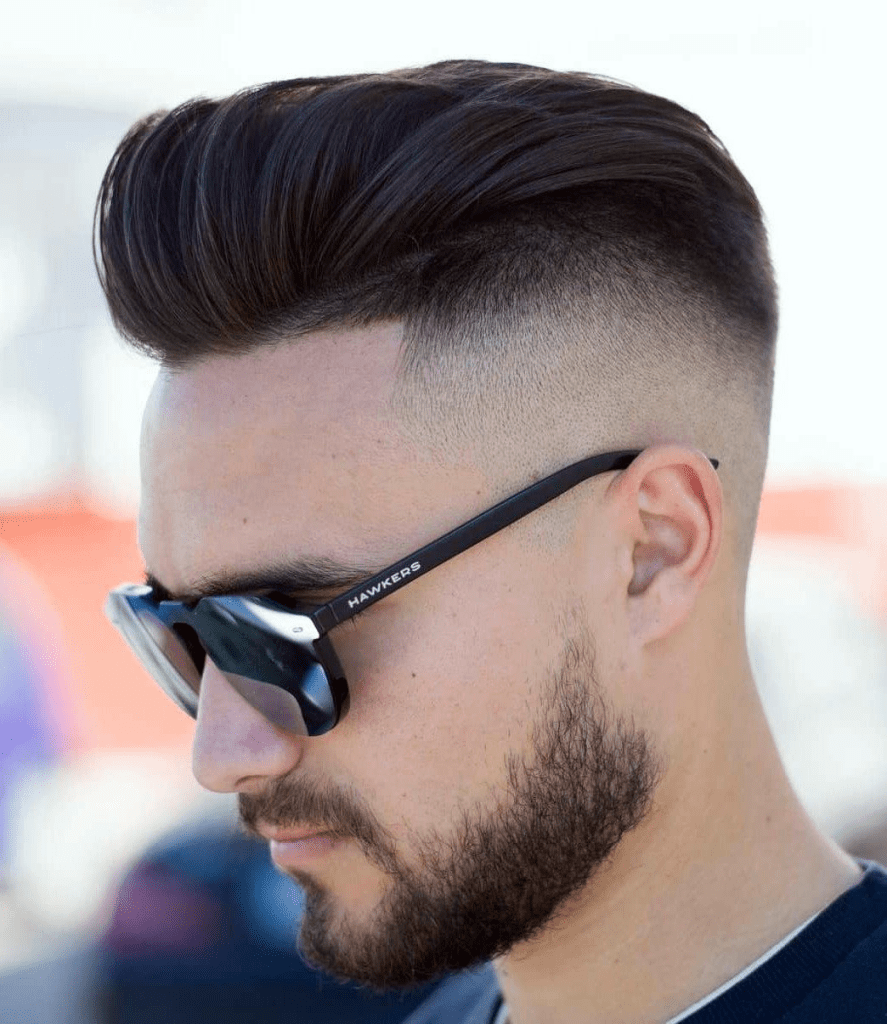

The High Fade is a fresh take on the traditional fade style, where the fade starts a couple of inches above the ear and becomes progressively shorter as it goes down the head. This type of fade gives the barber more room to incorporate unique designs and transitions. It’s versatile enough to complement a variety of looks, from a simple, short top to more elaborate styles. The high fade is particularly popular for its clean, crisp lines that add a contemporary edge to any haircut.
3. Blend Magic: The Perfect Mix of Taper and Fade


Blend, often referred to as “Combine all together Taper Fade,” is a barber term used to describe a style that mixes aspects of both the taper and fade haircuts. This isn’t a specific haircut in itself, but more of a technique where elements of both styles are combined. The result is a haircut that allows you to run your fingers through your hair without the weight and sweating often associated with thicker styles.
The blending technique removes excess weight and connects longer locks on the top to shorter lengths on the sides and back, creating a clean, workable, and versatile finish. When considering this style, it’s beneficial to bring photos to your appointment to clearly explain your desired look. A skilled barber can then advise you on the best way to blend these styles, taking into account your hair’s length and texture. This approach ensures that your haircut is not only stylish but also manageable and suited to your personal preference.
